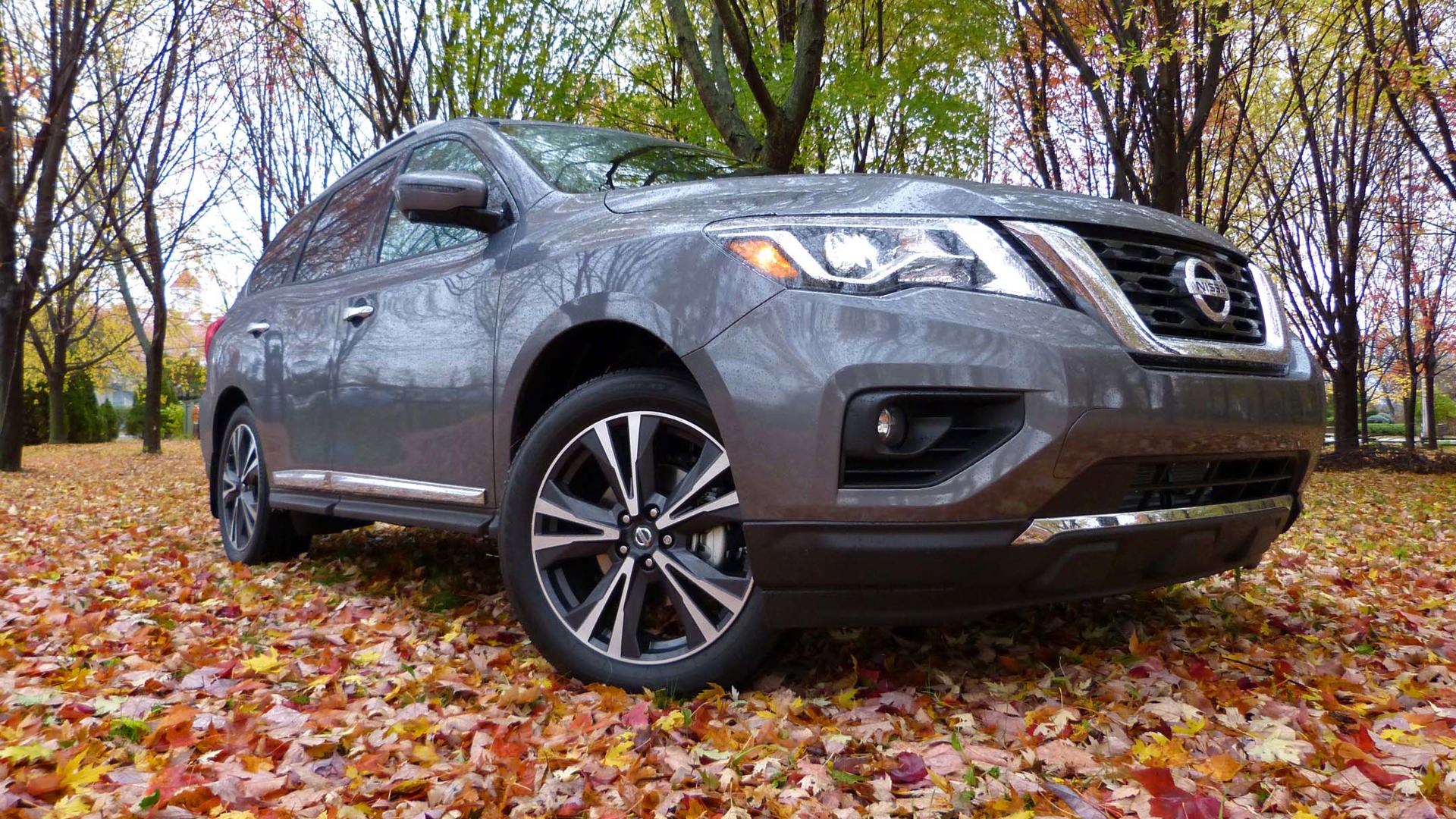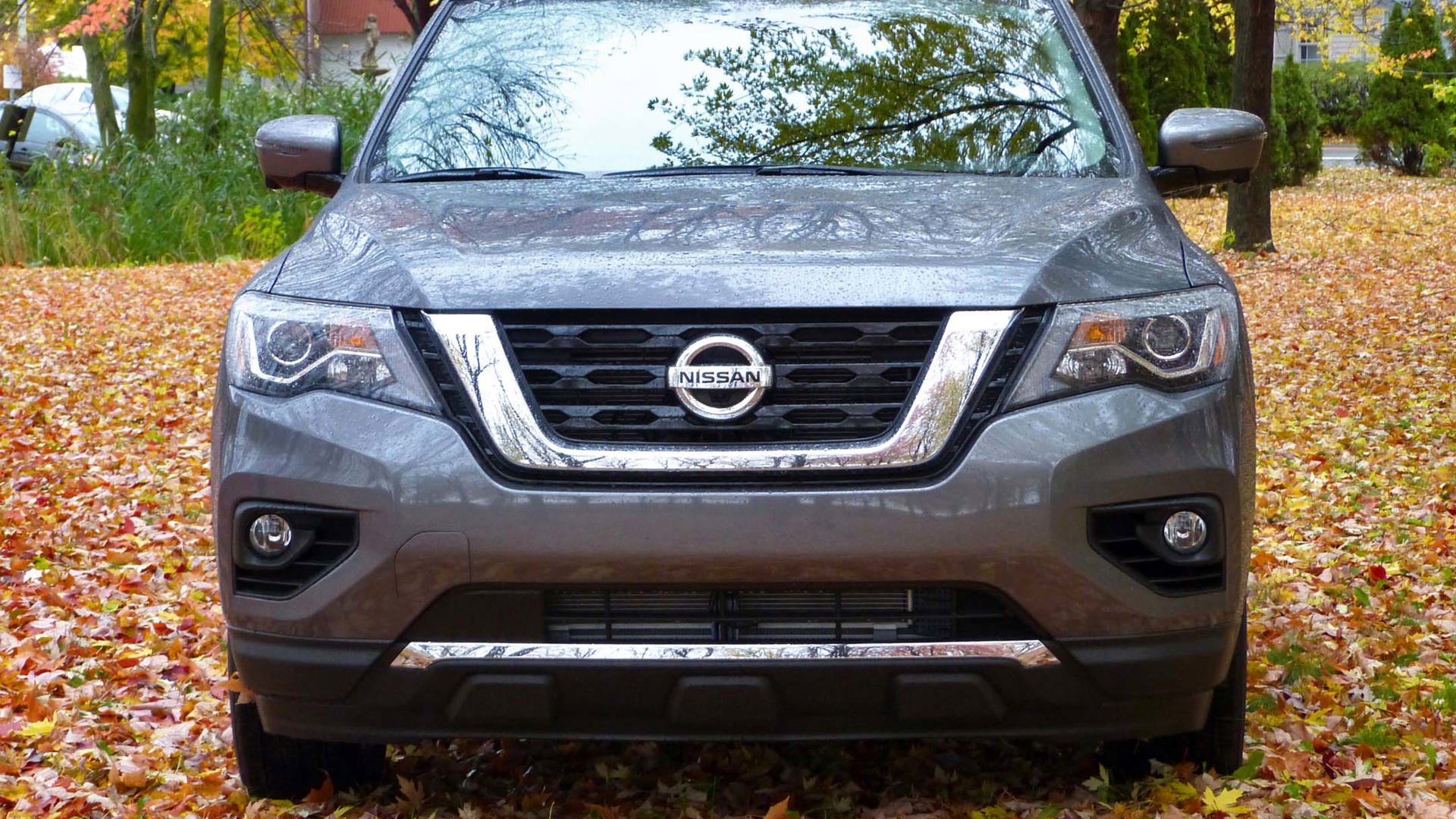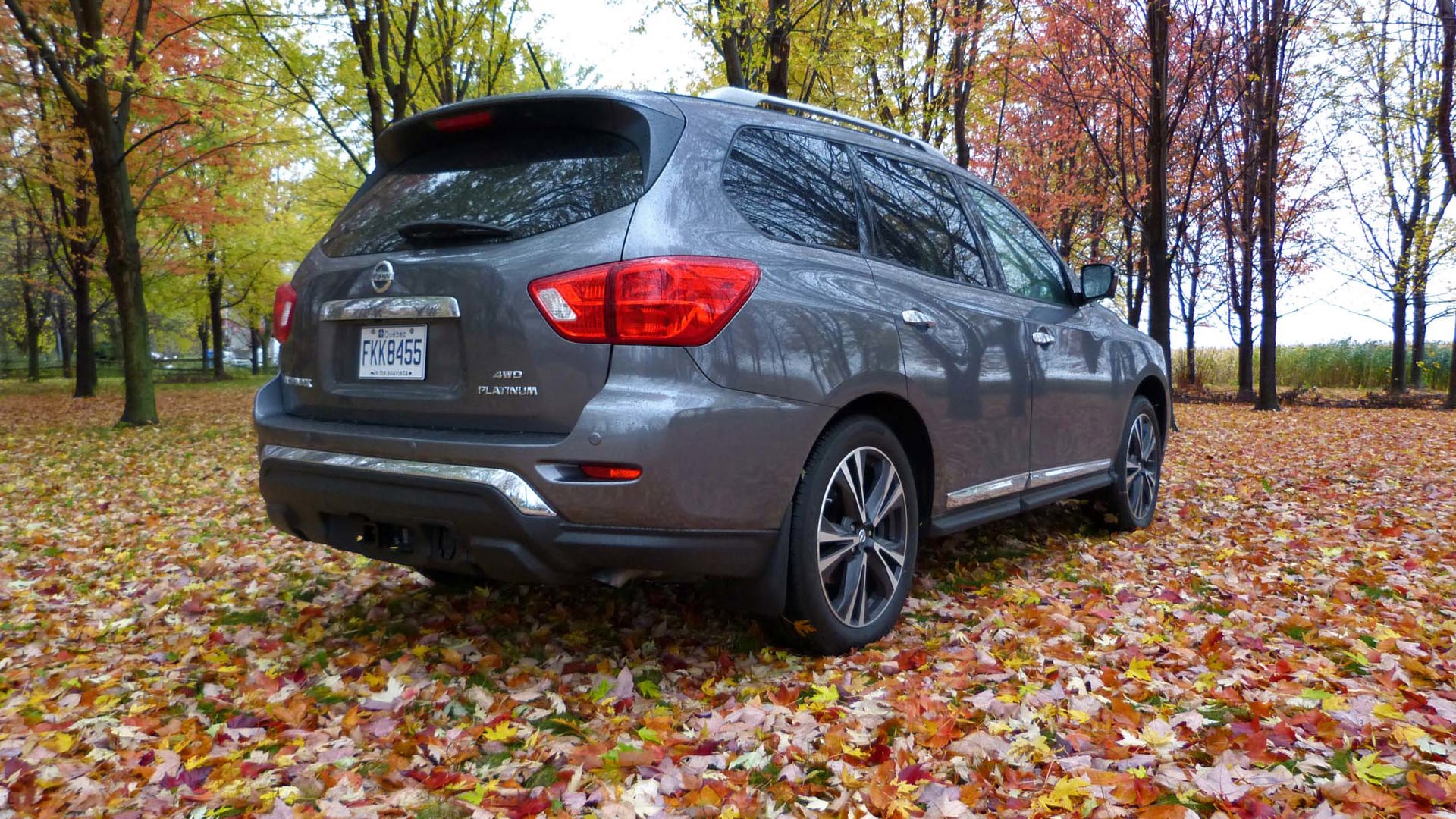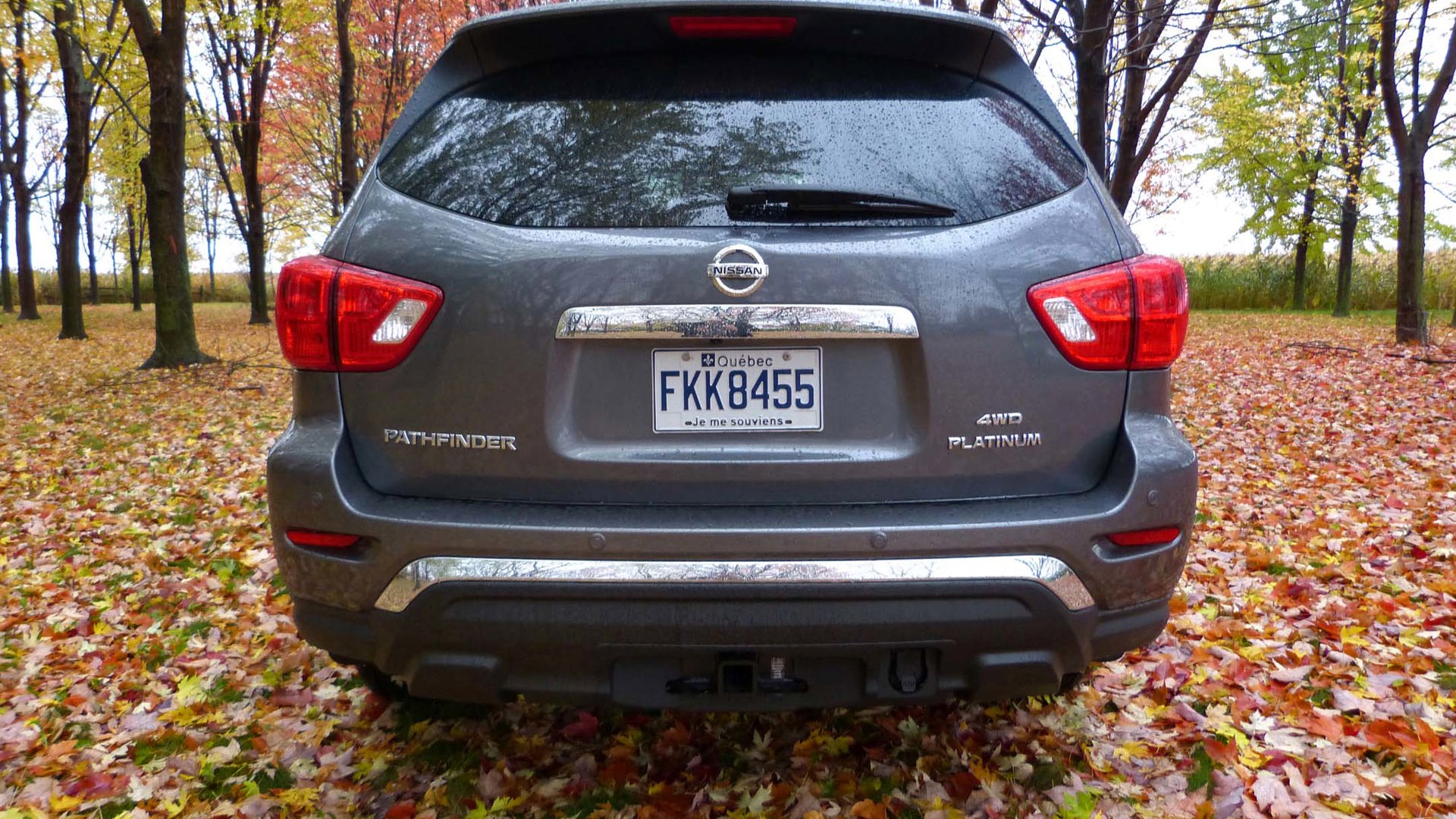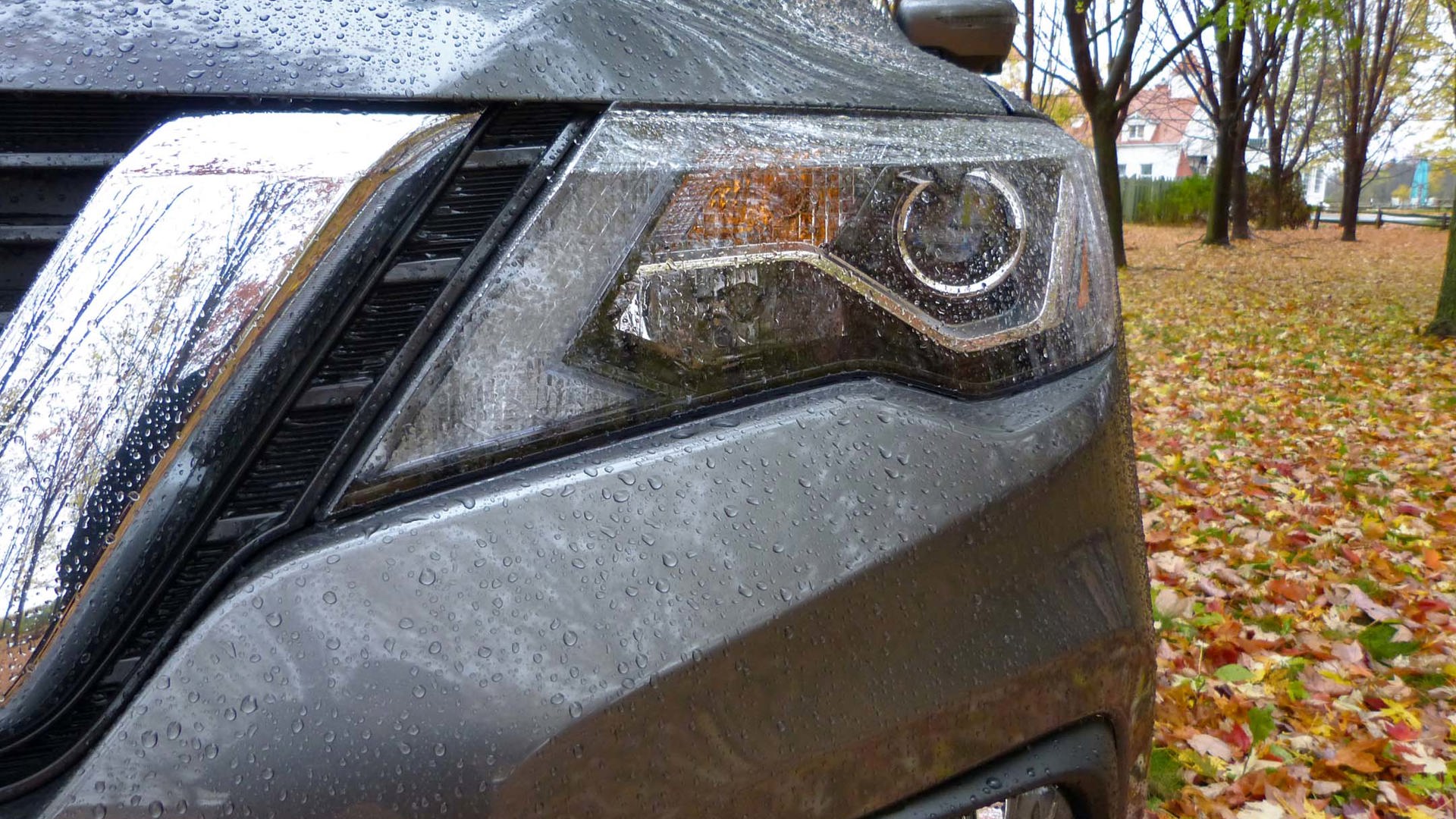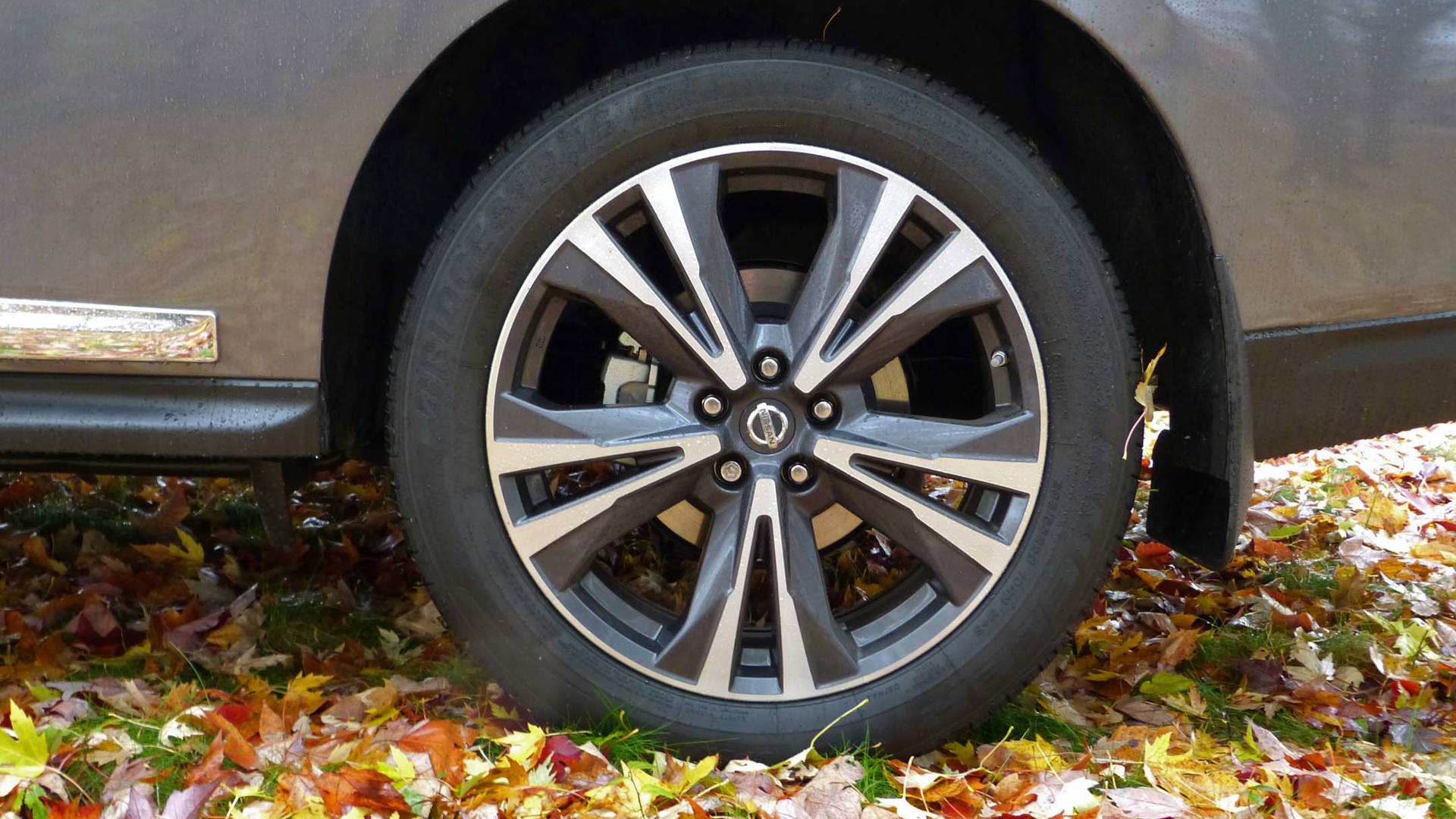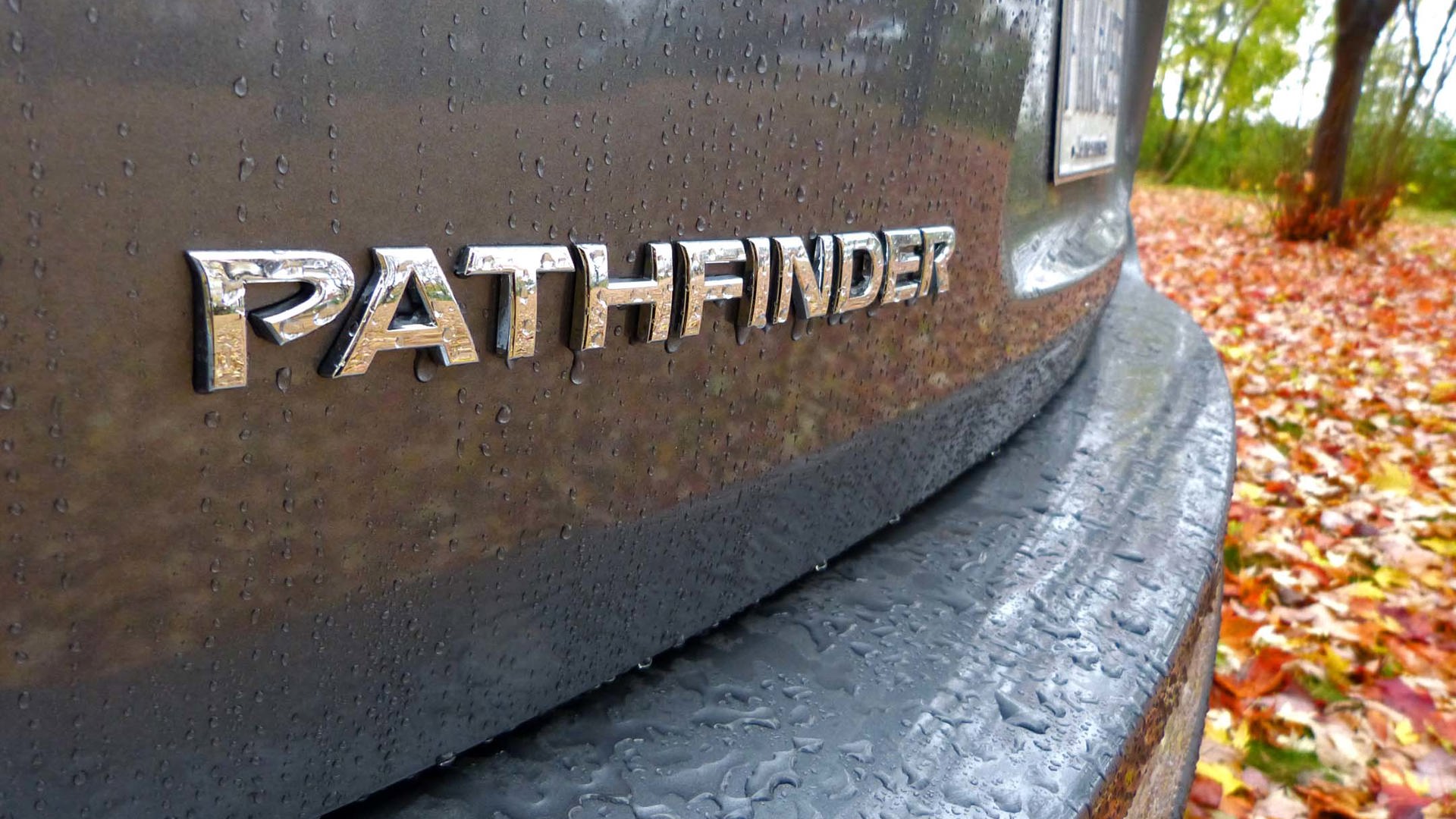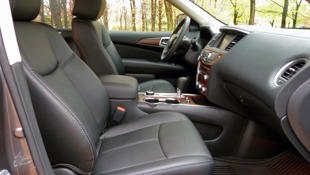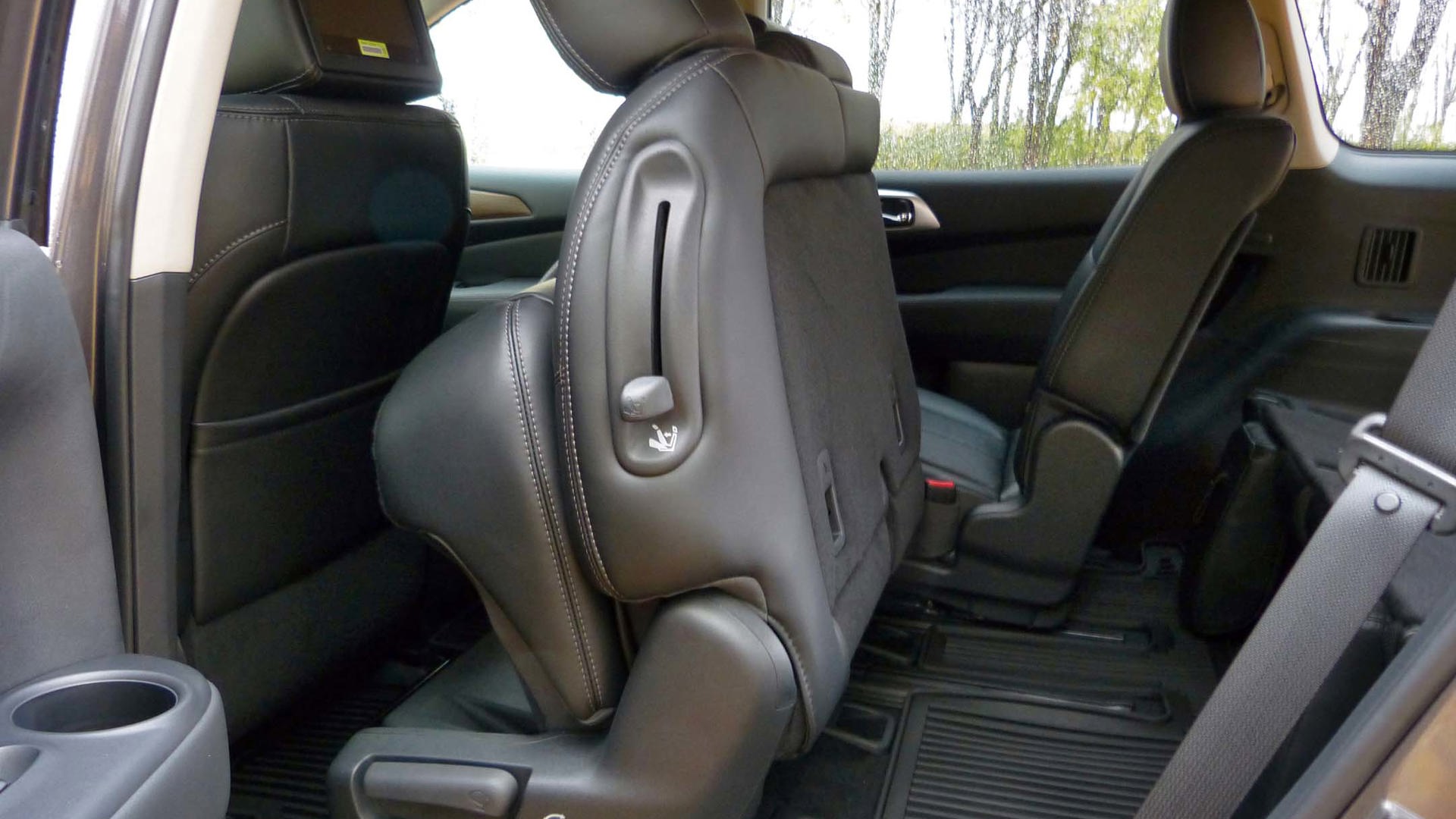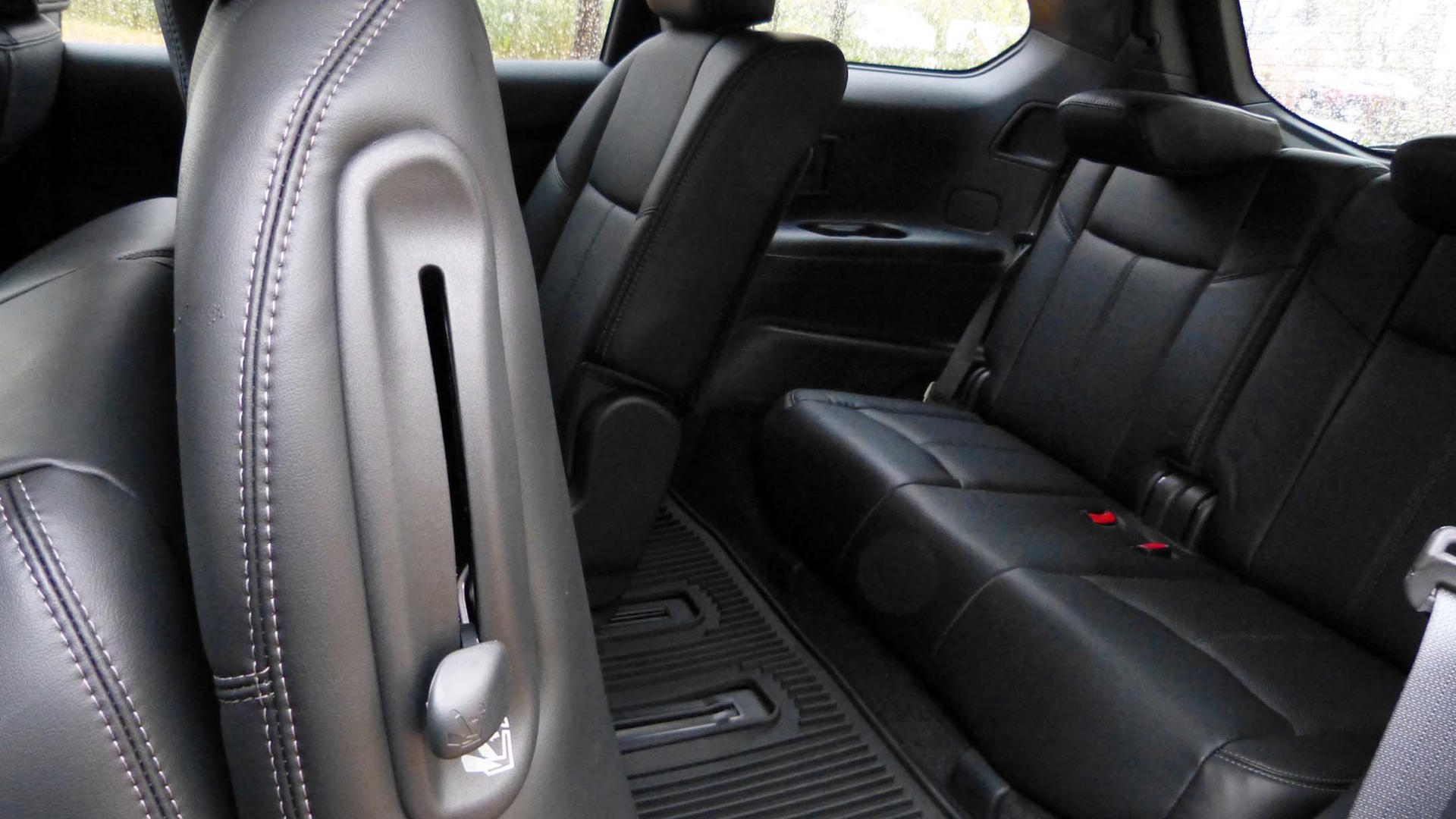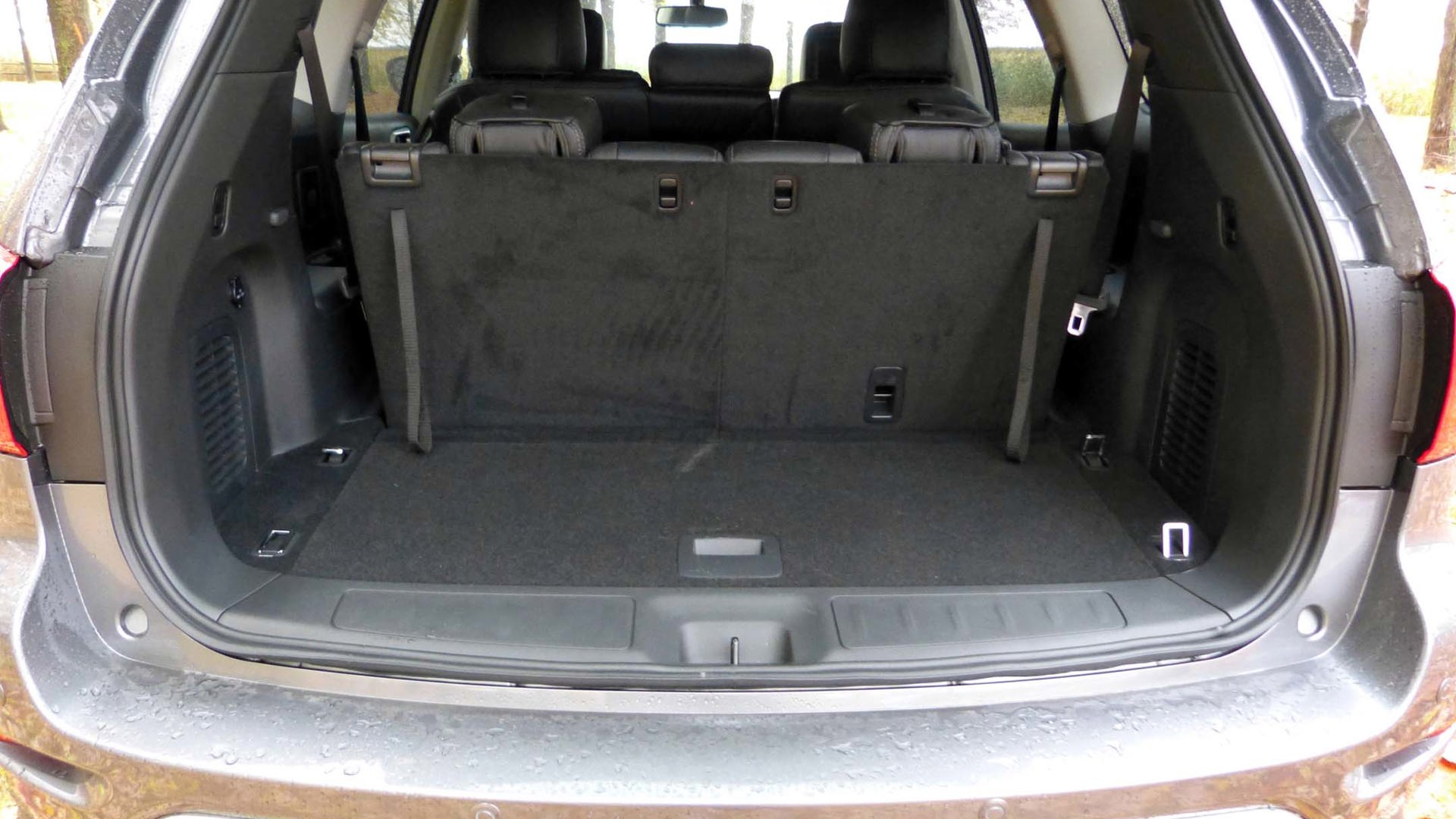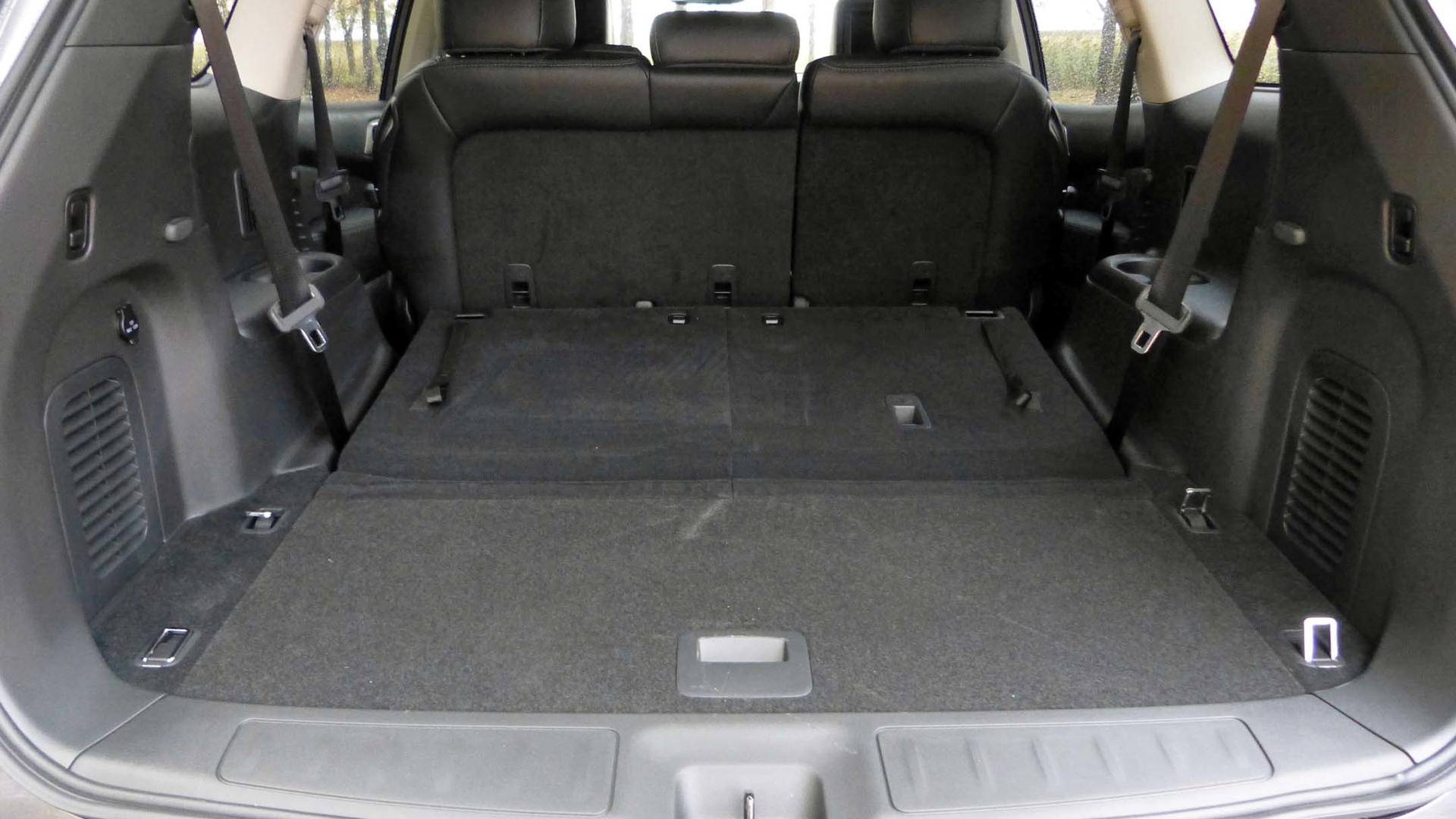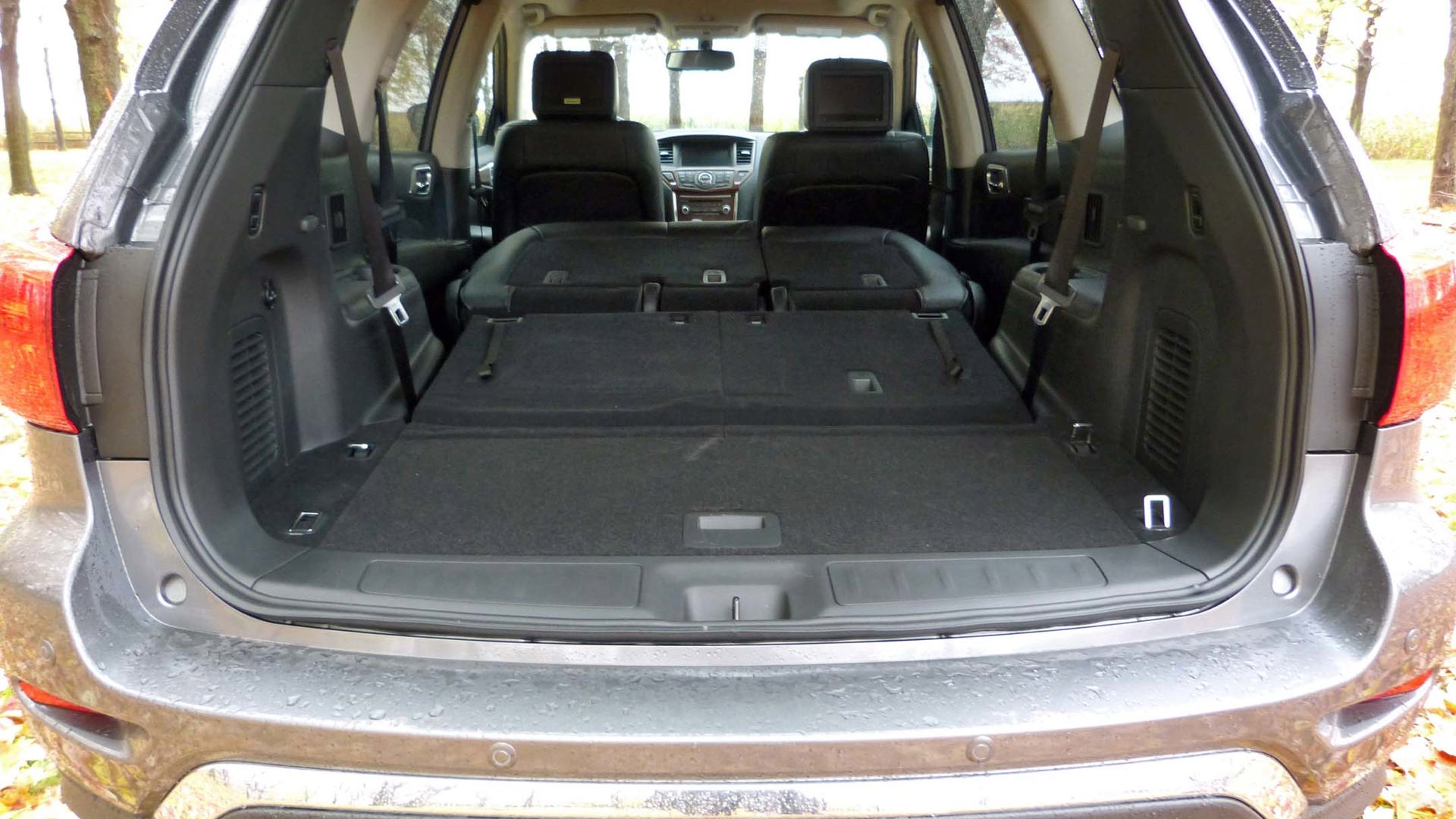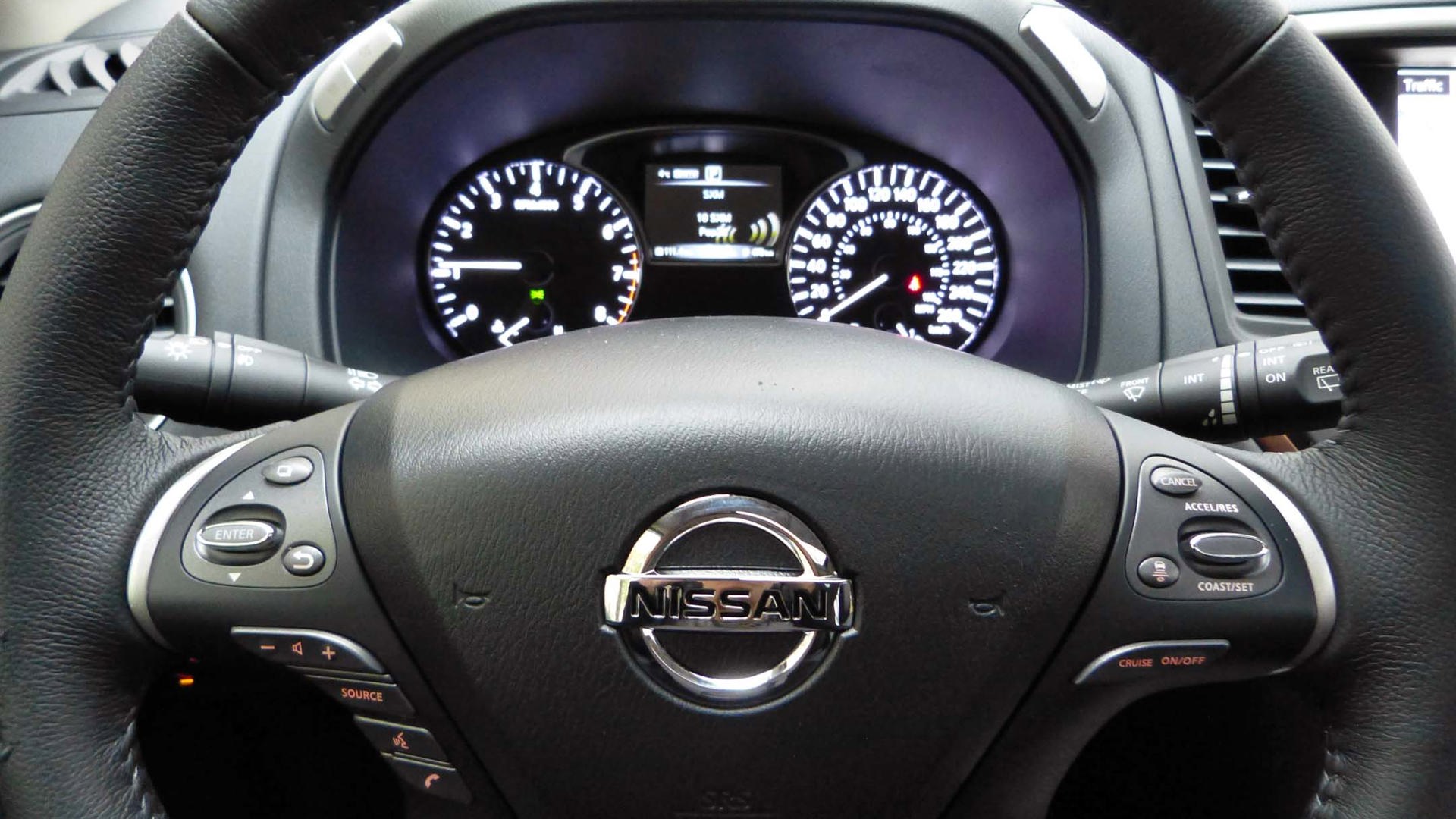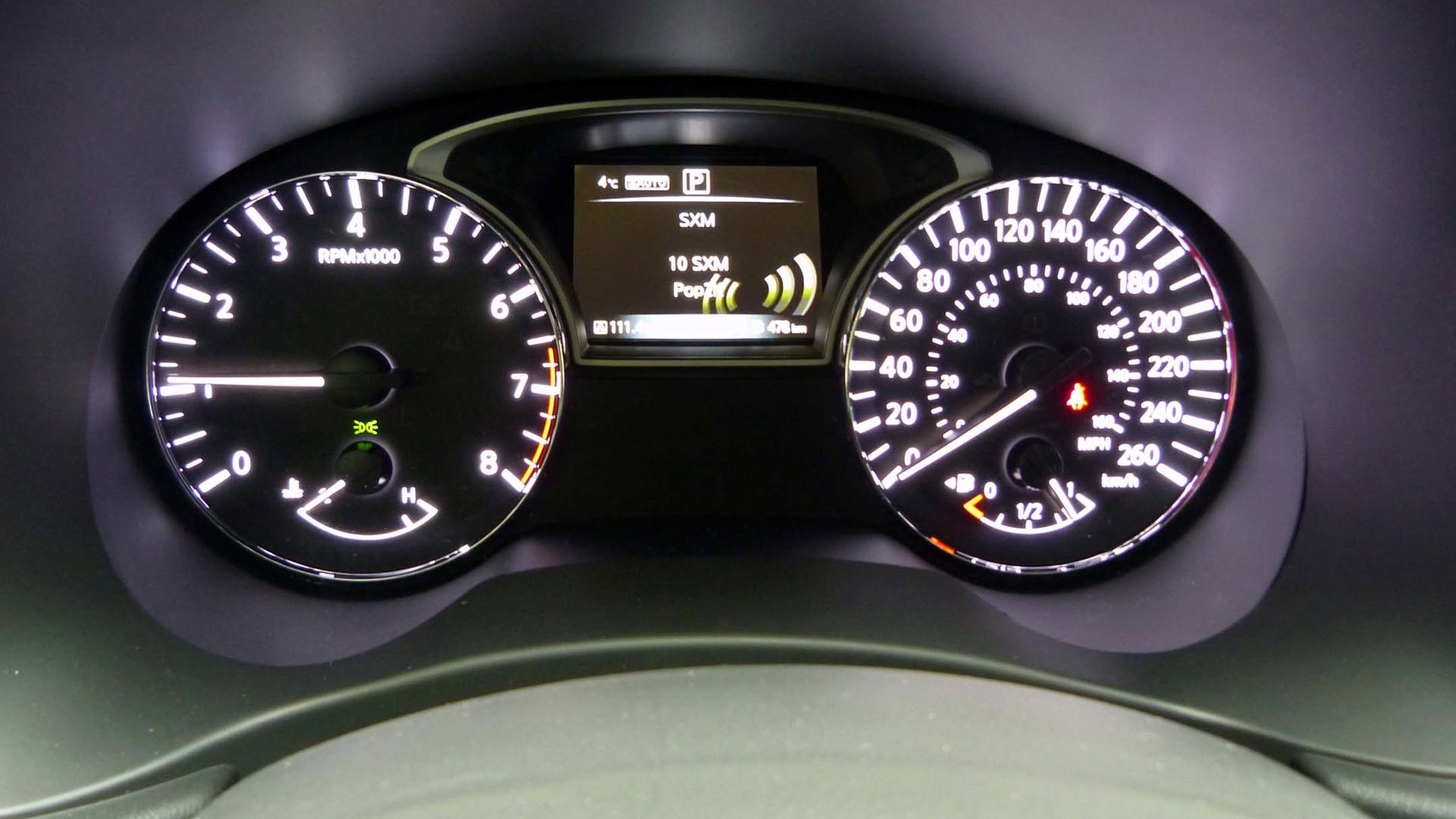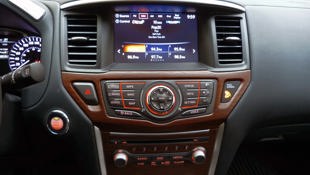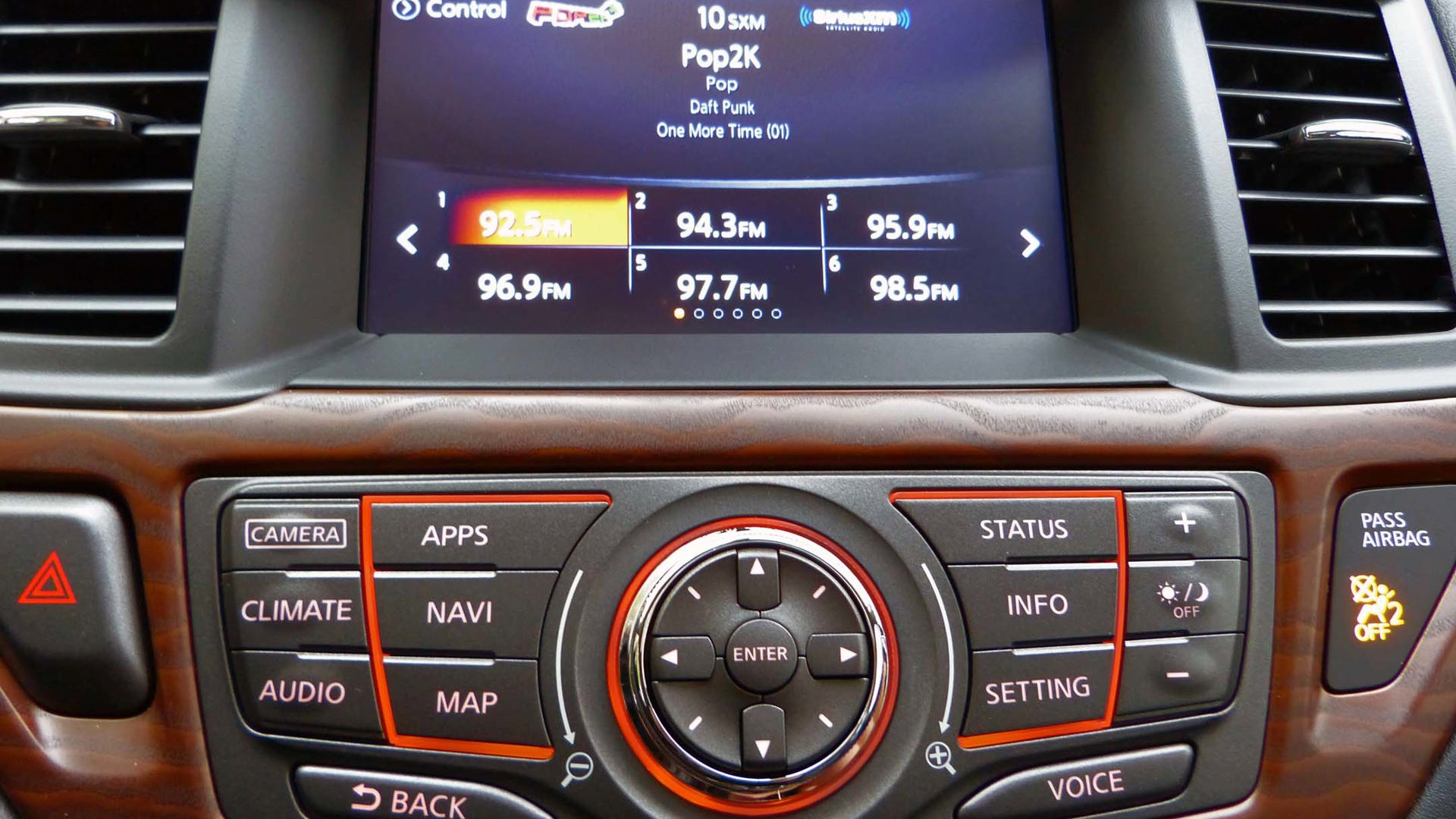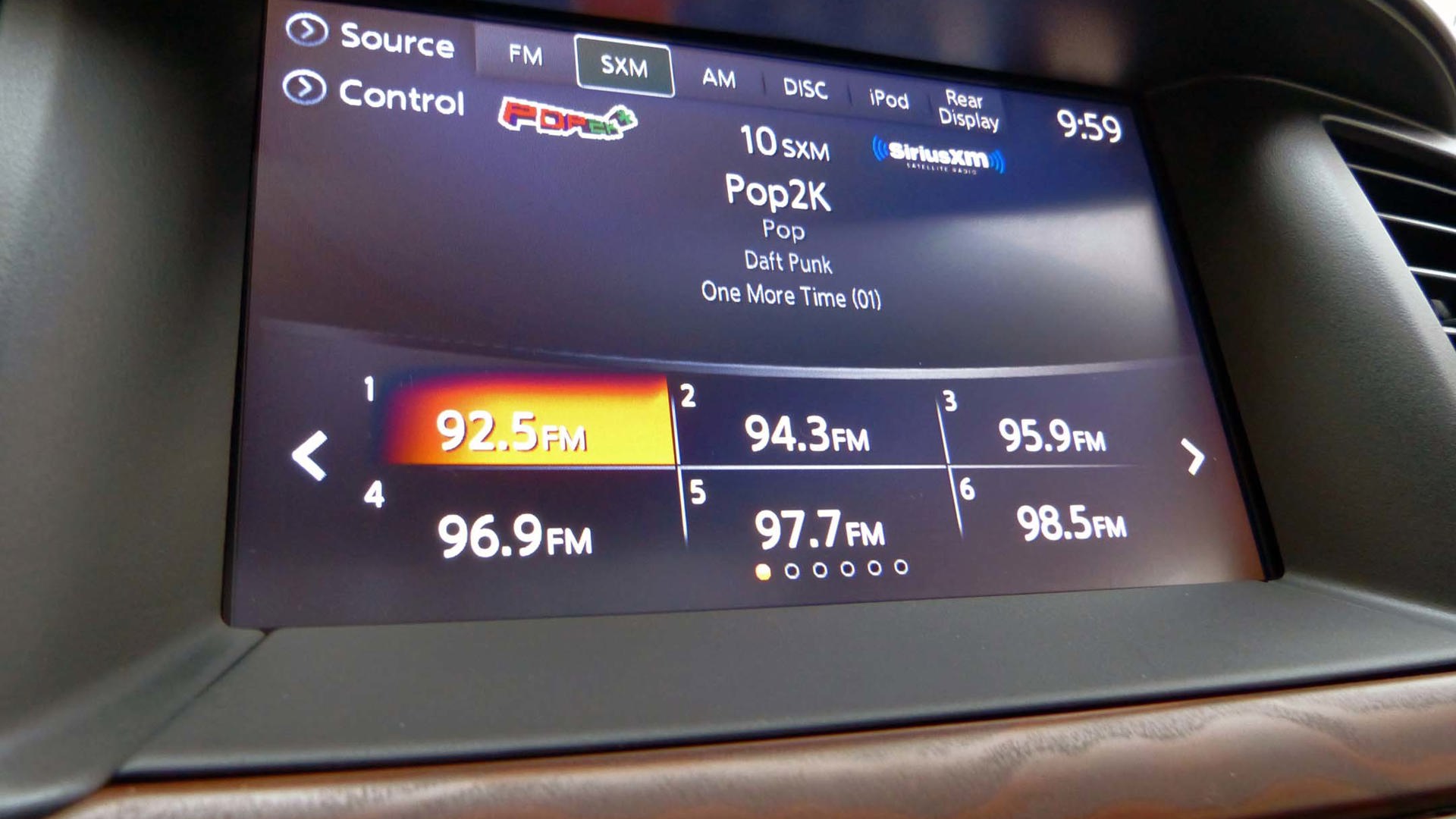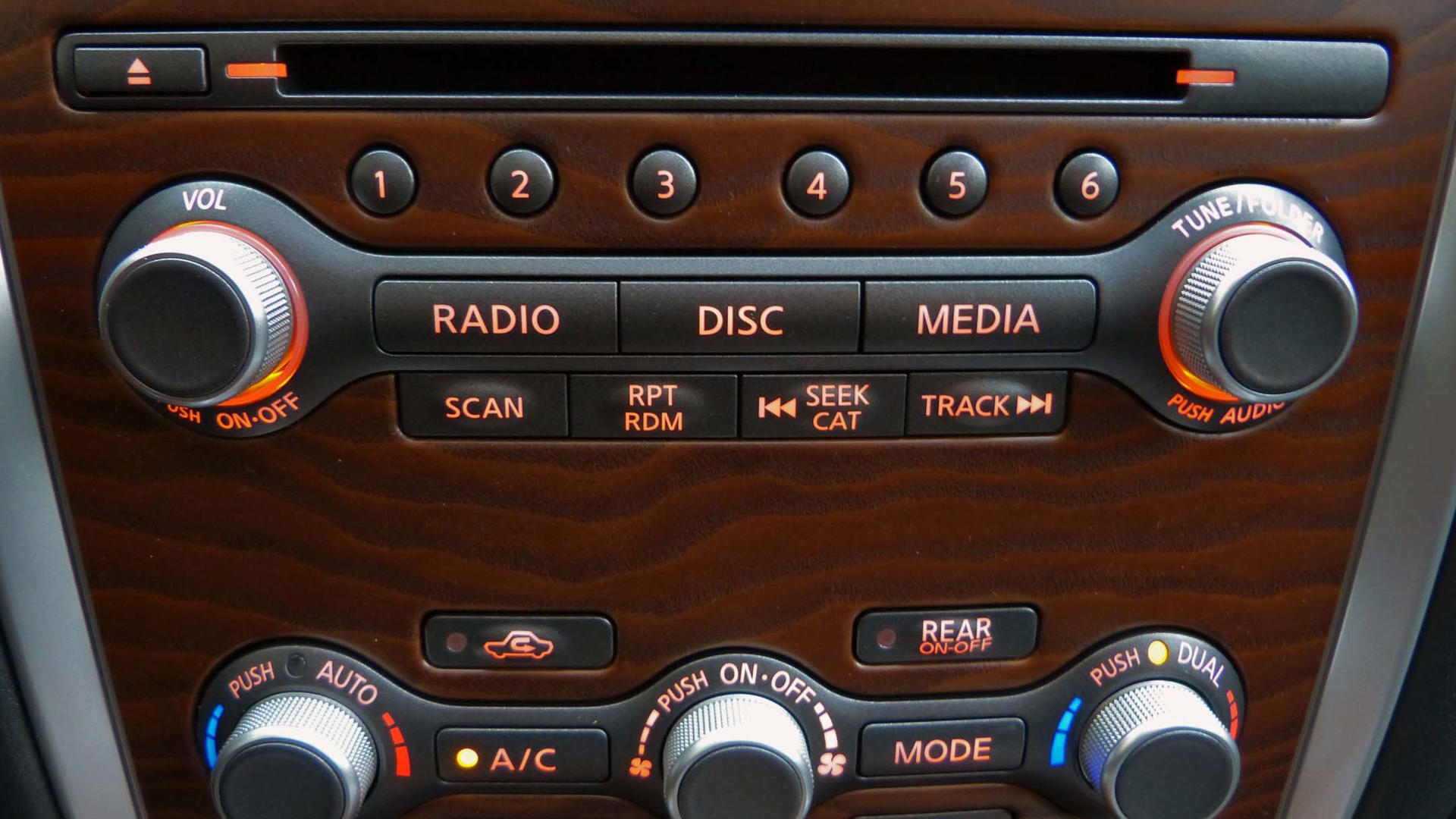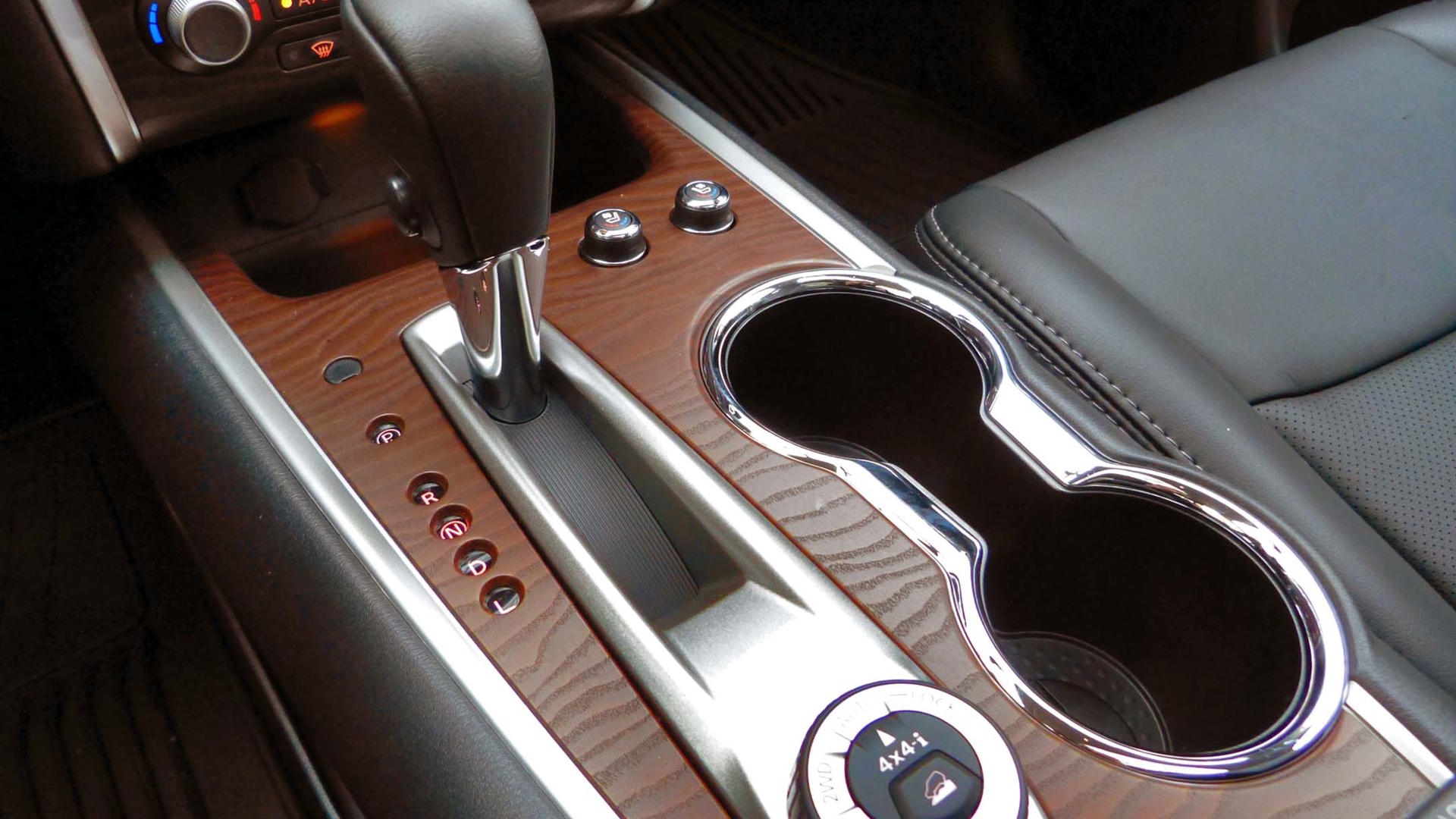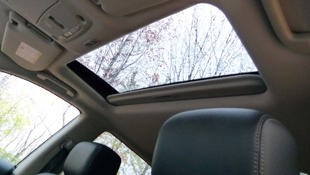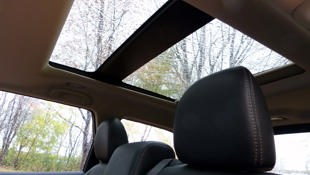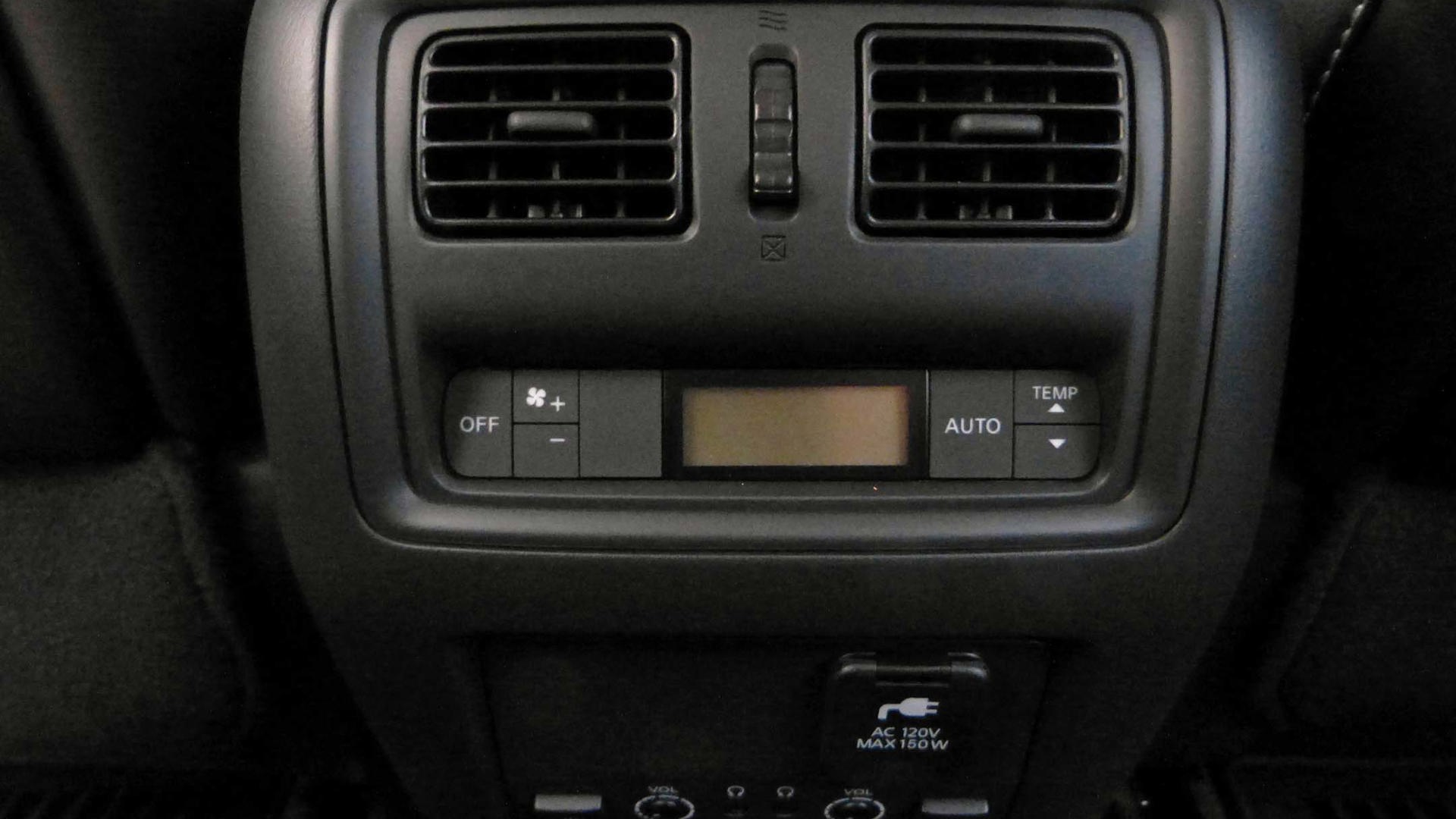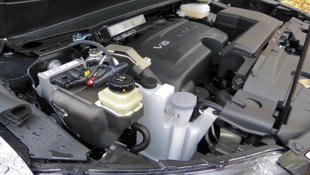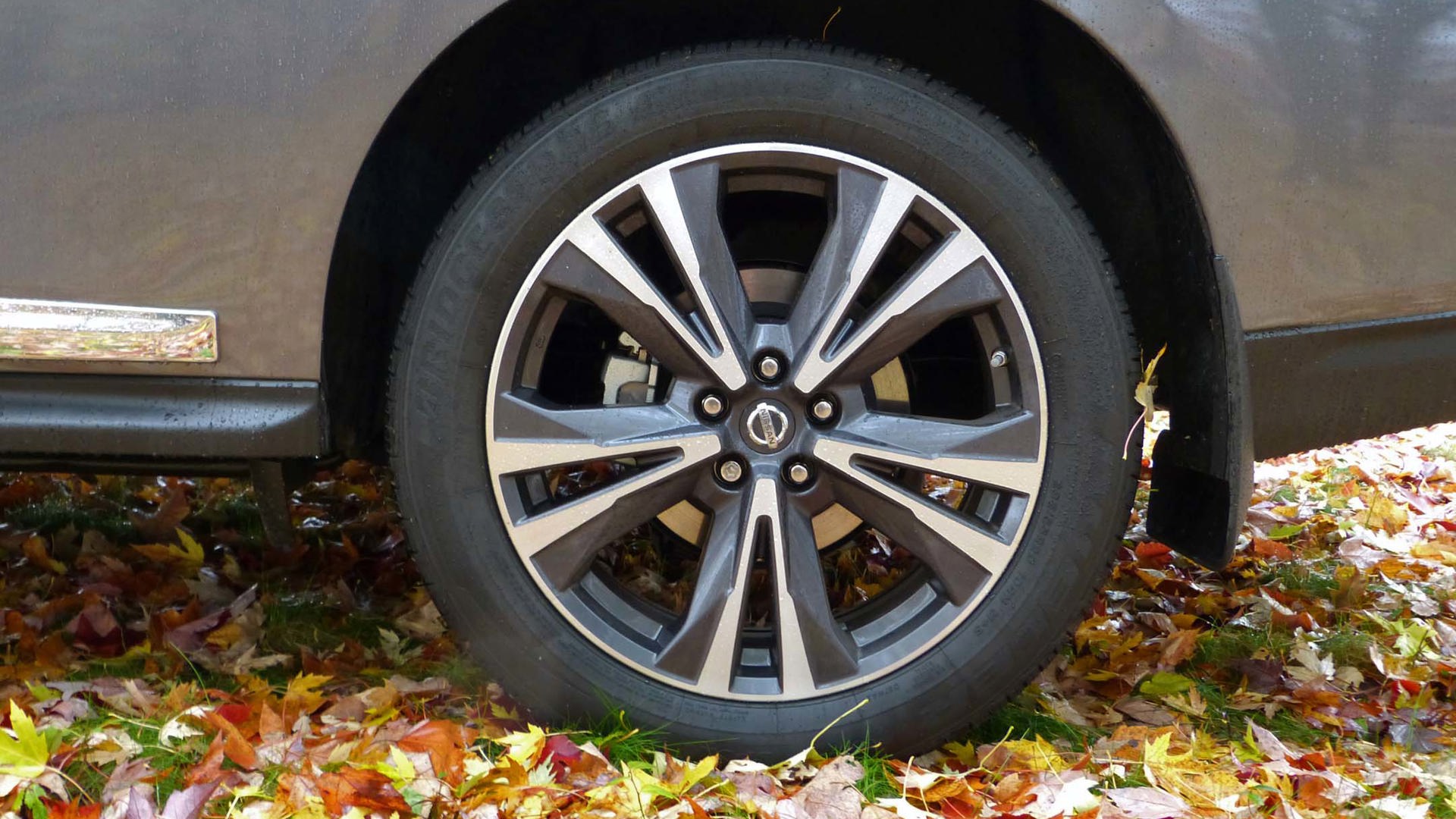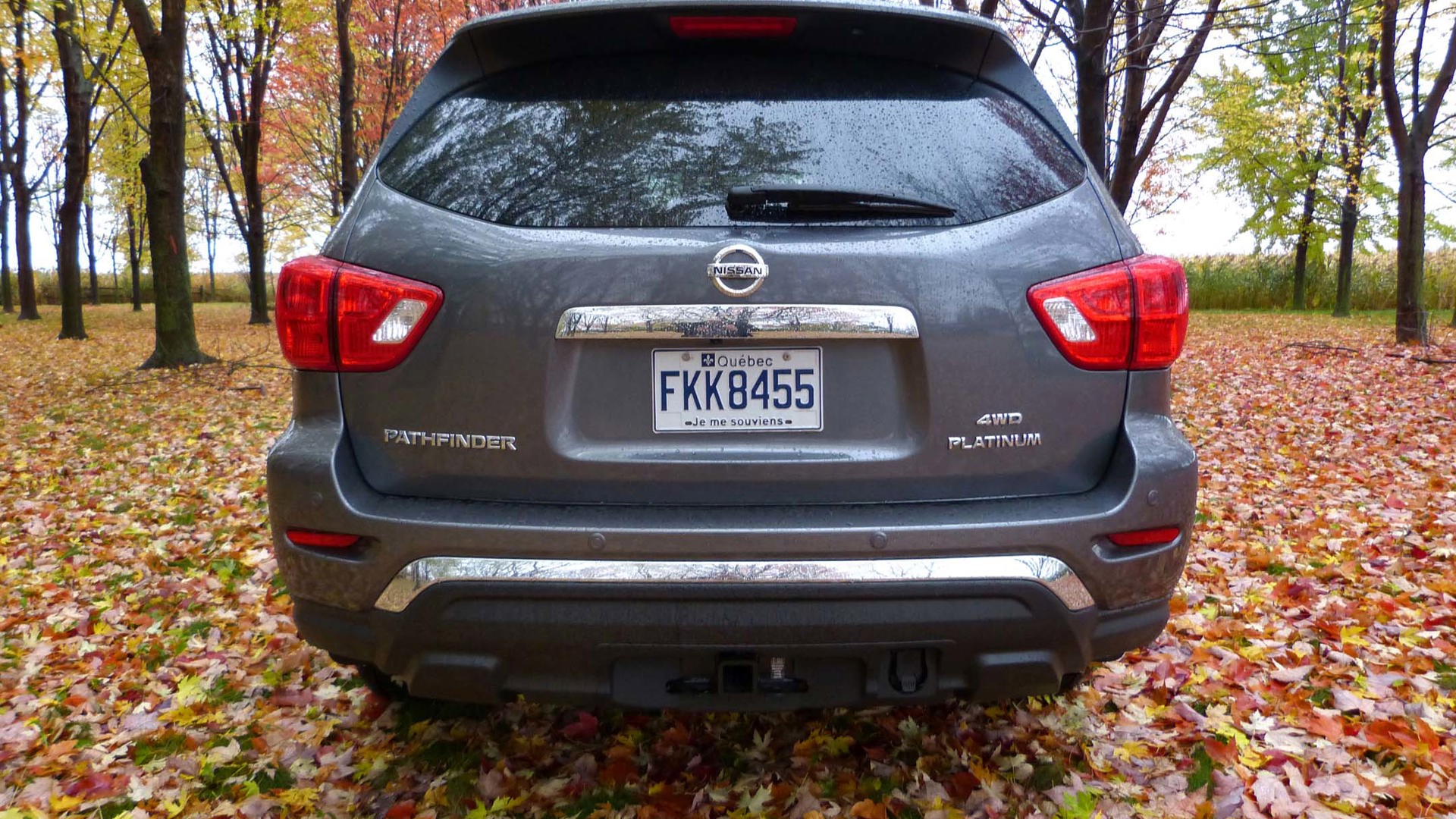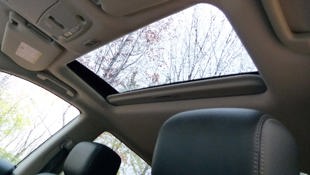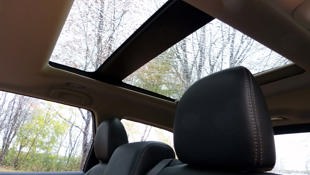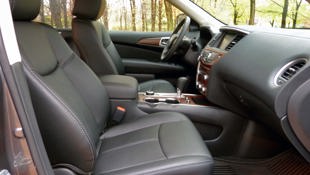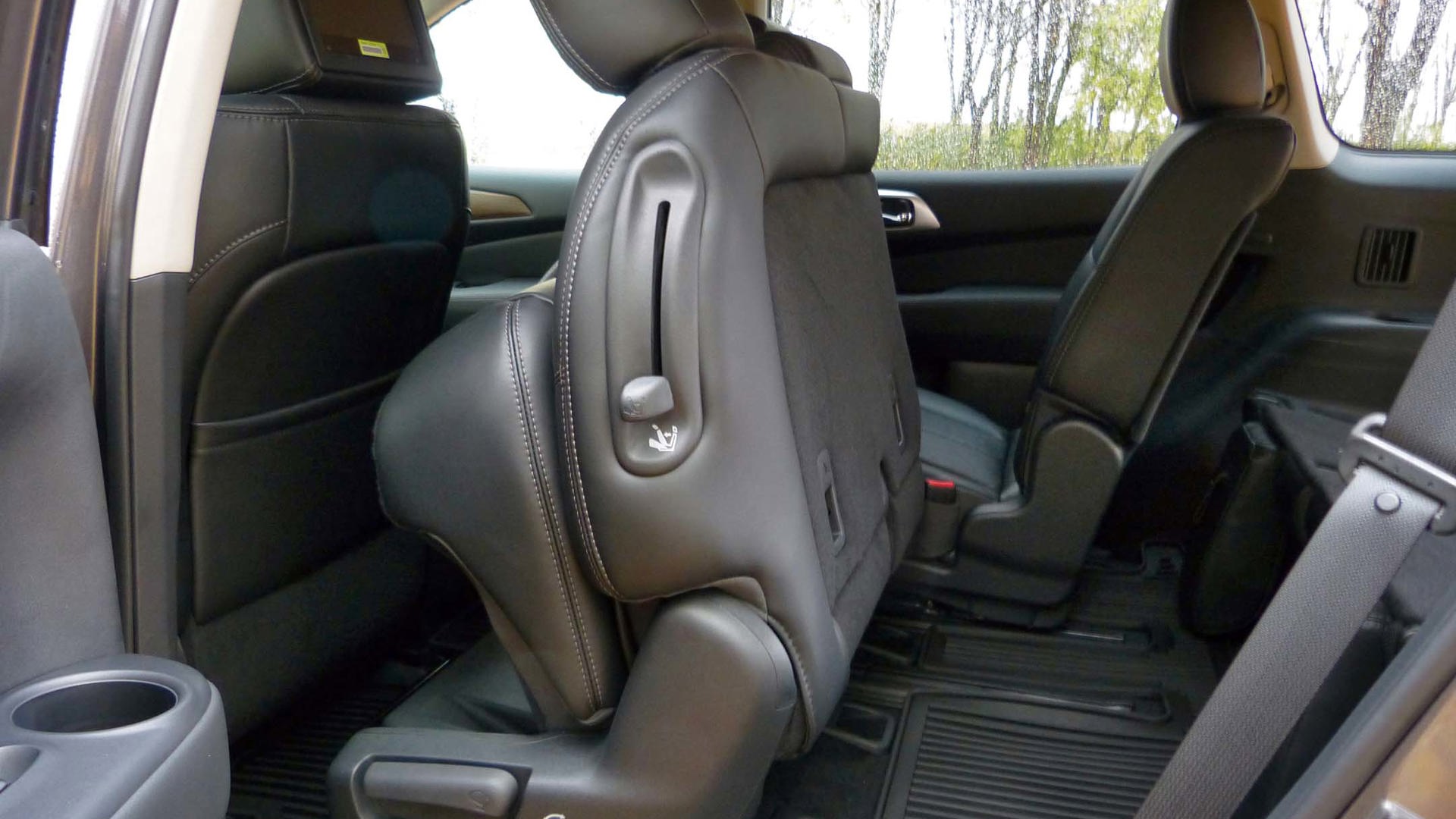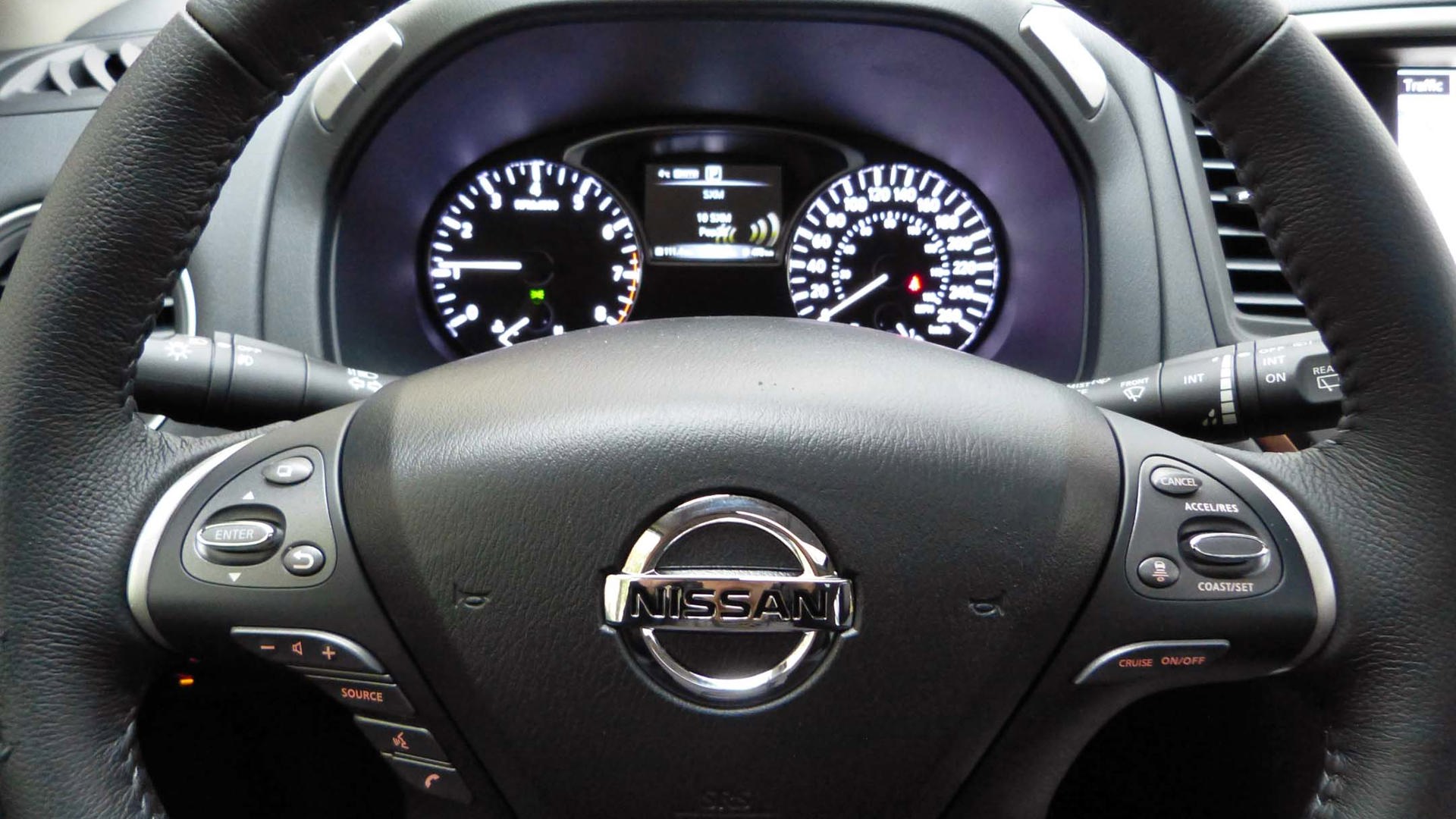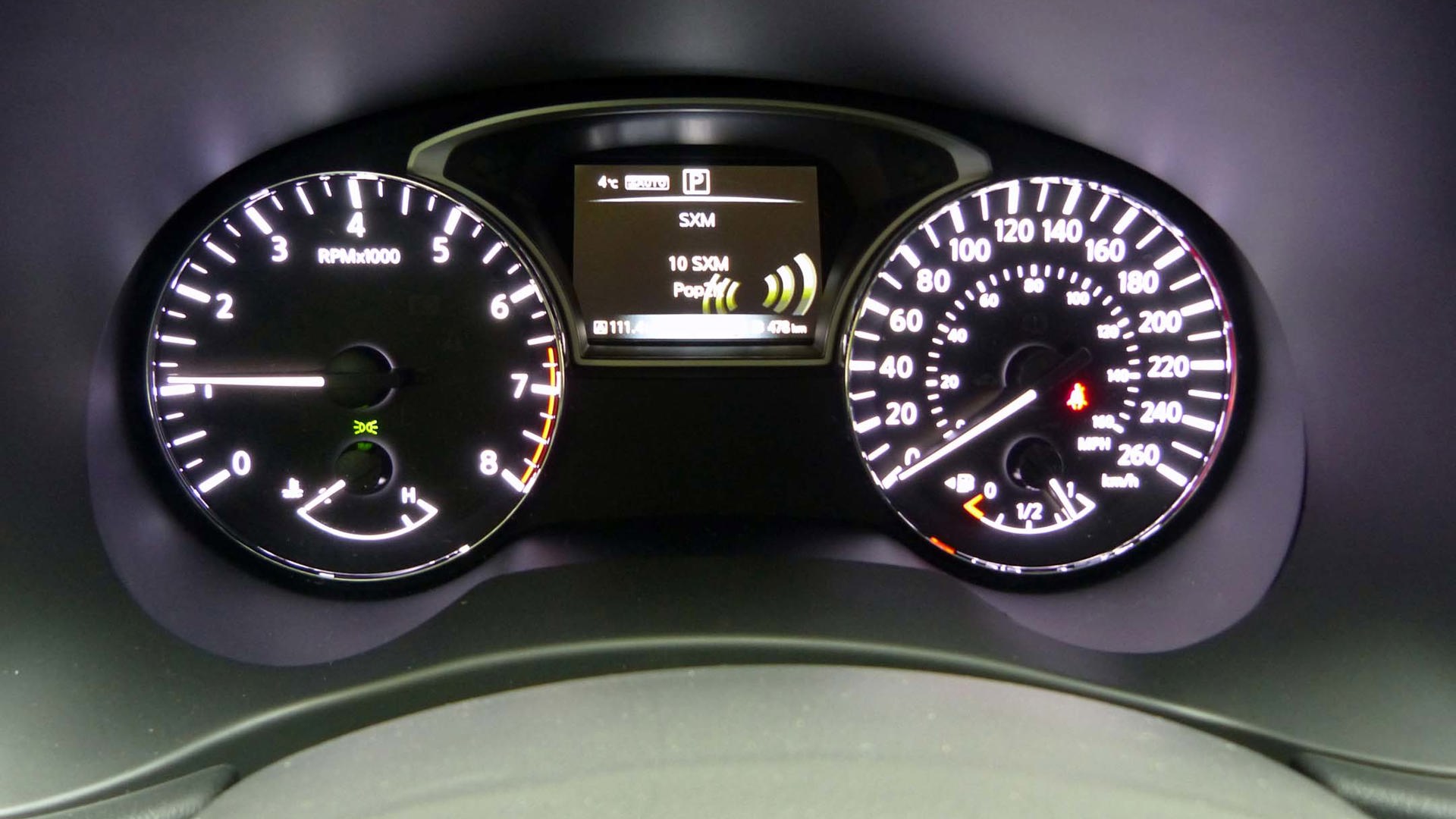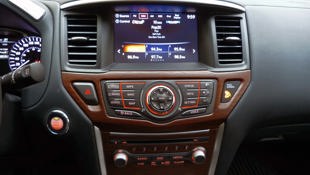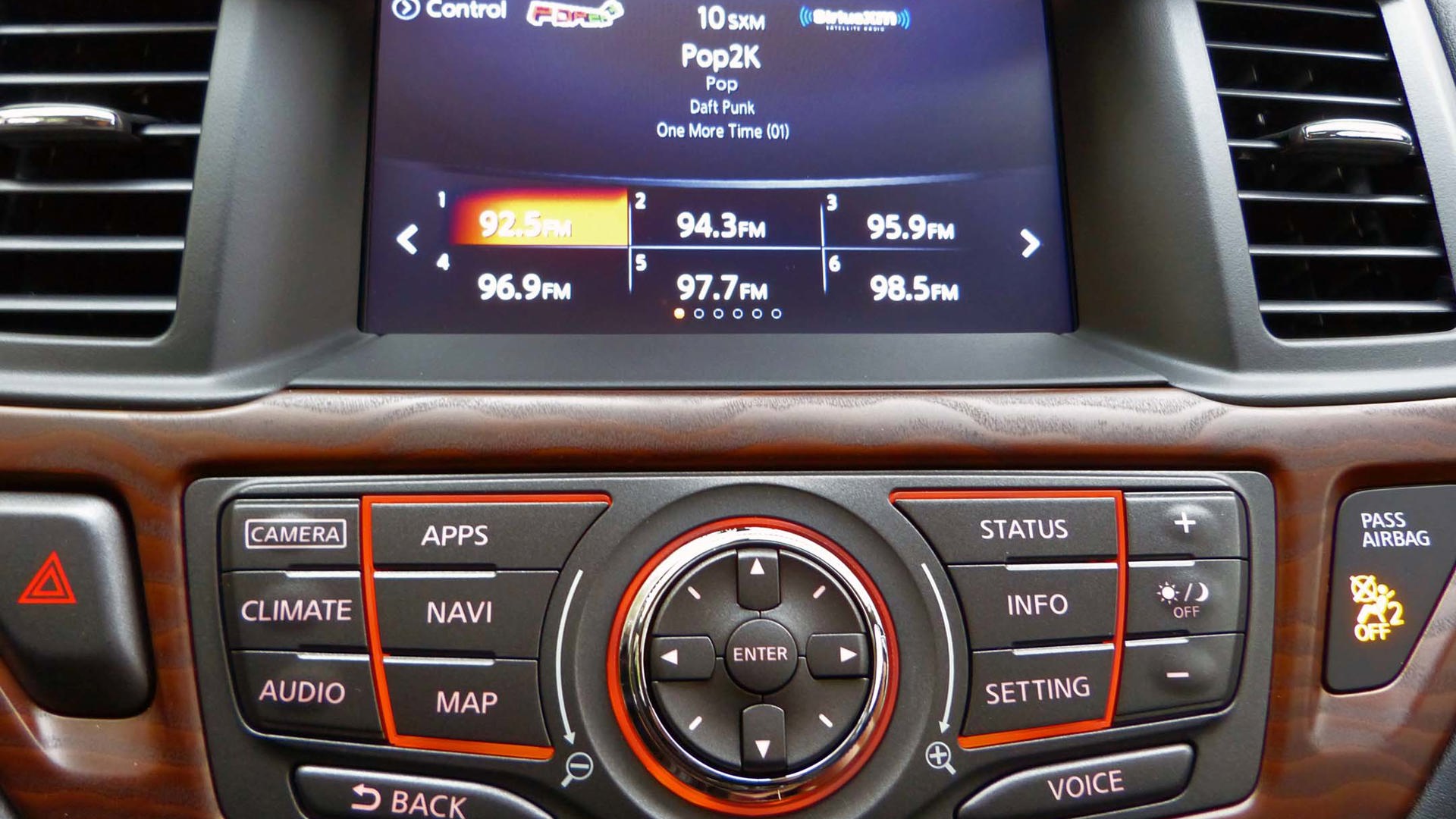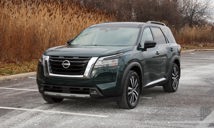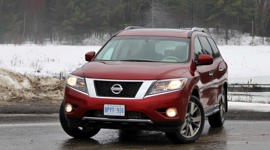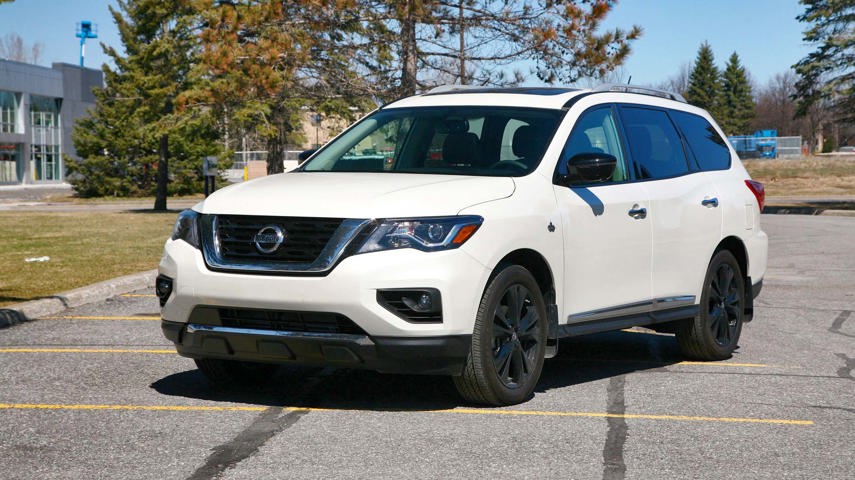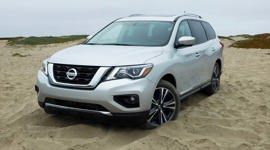 AutoTrader SCORE
AutoTrader SCORE
-
STYLING7/10
-
Safety7/10
-
PRACTICALITY9/10
-
USER-FRIENDLINESS6/10
-
FEATURES7/10
-
POWER7/10
-
COMFORT7/10
-
DRIVING FEEL7/10
-
FUEL ECONOMY9/10
-
VALUE8/10
“I need seven seats, but I don’t want a minivan. What should I buy?”
Ah, the refrain of the suburban Canadian family.
If this doesn’t end up having the best fuel economy in its class then it should be very darned close.
Fear not, my fashion-conscious friends, for there are options. Depending on what you need and want, the 2017 Nissan Pathfinder might be one for you to consider. It’s not the most stylish nor the most technologically advanced SUV out there, but there’s plenty of value crammed into its $48,698 manufacturer-suggested price tag.
Powertrain
Several things about the Pathfinder have been updated for 2017, the most significant being the engine.
Nissan took 43 percent of the previous generation’s engine and bolted on some new bits from across their line-up’s tool bins. The result is the new VQ35DD, a direct-injected, naturally aspirated 3.5L V6 that makes up to 284 horsepower and 259 lb-ft of torque.
That’s the upside. The downside is that they decided to pair it with their CVT.
I’m not anti-CVT in principle. They absolutely have their benefits. But they tend to do best when mated with turbocharged engines, where the maximum power output becomes available at a lower rpm range.
With even a beefy V6 naturally aspirated engine such as this one, the power band is much higher – 6,400 rpm for peak horsepower, 4,800 rpm for peak torque – and a CVT doesn’t allow for a controlled way of pulling the engine all the way up there. This leaves the Pathfinder feeling limper than an SUV of its size really should at key moments such as overtaking or highway merging.
That said, the obvious payoff comes in fuel economy. The Pathfinder gets its 2,103 kg of weight around at a stellar combined rating of 9.2 L/100 km. The full list of 2017 model year fuel figures from Natural Resources Canada isn’t out yet, but a glance over the 2016 numbers suggests that if this doesn’t end up having the best fuel economy in its class then it should be very darned close.
There’s also no downside in towing capacity, which Nissan says it has managed to push up 1,000 lb to a class-leading 6,000 lb (2,720 kg) when equipped with the towing package thanks to these powertrain upgrades as well as some added reinforcement around the trailer hitch.
All trims but the very base model come with a four-wheel-drive system with three different modes: full-time two-wheel drive for added fuel efficiency, four-wheel drive lock for tougher conditions, and automatic mode, which lets the computer decide for you. The Pathfinder also has hill start assist and hill descent control, features that seem to be disappearing from some of its competitors.
Styling
Part of the Pathfinder’s refresh includes a new grille and headlight/taillight treatment as well as a more aggressive hood, front and rear bumpers, and fog lights. These are improvements, but the parts in between still have a way to go to catch up to the sleek designs of some competitors – though the bright cabin and added visibility of the larger rear windows is a side-effect bonus of its age.
On the inside the design is functional, but the centre stack has a lot of buttons and knobs to take in and the wood-look trim is a coated plastic. In an era where others are releasing more streamlined centre stacks and real wood and chrome highlights at similar price points – Mazda CX-9, anyone? – Nissan has room for improvement here.
The Pathfinder does have plenty of glass, though, including a pair of sunroofs, which allows plenty of light in to brighten things up inside.
Comfort/ergonomics
Where smoothness of ride and quietness of interior are concerned, the Pathfinder is middling at best.
The quality, layout and comfort level of the seats, on the other hand, stand out.
This tester came with heated and cooled front seats, heated outboard second-row seats – captains’ chairs are not an option here – a driver’s side memory function, and an accessibility feature that pulls back the seat when the door opens for greater accessibility. Oh, and there’s also a heated steering wheel function that warms almost all the way around. At this price point, though, this level of features is becoming par for the course.
One thing that stood out to me is how ergonomically sound the Pathfinder’s driver’s seat, wheel, and gauge cluster combination is for my stunted-limbed self. I often find it difficult to get a car’s seat close enough to the pedals for my short legs, or the steering wheel close enough to my body to put my short arms at a 90-degree angle – and if a car accomplishes both of those things, I often can’t see everything on the dash. Here, the seat and wheel can be positioned beautifully and the gauges are deeply set behind the wheel, which means that for most people very little will be obstructed. It’s a small detail but a refreshing one.
There are three LATCH positions for child seats in the second row – though only the two outboard or one centre can be used at one time – and the sliding seats allow access to the third row without having to move a child seat out of the way.
I didn’t have my five-year-old daughter along to test out the third row for me, but it looked to my eye to be suitably spacious and easy to access for her liking.
Infotainment
The major flaw with the infotainment system in the Pathfinder is that there are far too many ways to interact with it.
The system is founded on an 8-inch touch display mounted above an array of buttons and knobs. Some make sense in what they’re meant for (“Navi” is quite clear, for example), but others are baffling. I never did figure out how to configure the dial-plus-arrow-buttons apparatus in a way that made sense to me.
More importantly, there’s quite a lot of interaction duplication that’s not necessary. Why have climate control available through the touchscreen as well as taking up a third of the centre stack? The answer is that they haven’t done enough of an overhaul on this model to eliminate the repeated features, but in the meantime what’s left causes confusion.
While it doesn’t take terribly long to get used to finding the functions you’ll use often such as changing radio stations, if you want to adjust something you’ve never adjusted before then you’ll either be horribly distracted as you flail at buttons or you’ll be stuck waiting it out until your next rest stop.
And if Apple CarPlay or Android Auto are important features to you then you can move on. Nissan intends to integrate these products into their vehicles eventually, but the company hasn't gotten very far down that road just yet.
There are a couple of positives worth noting, though: the traffic function available exclusively on the Platinum trim is helpful, and I was as impressed as all get-out when I went through a tunnel leaving downtown Montreal and the satellite signal didn’t drop once. The antenna in the Pathfinder must be significantly more powerful than most.
Safety
A number of new safety features have been made available on this year’s Pathfinder, including adaptive cruise control, a 360-degree camera with moving object detection, and forward emergency braking. These add to the existing list of blind-spot warning and rear cross-traffic alert. Lane-departure warning, despite being a popular option, is not available here.
The tire-pressure monitoring comes with a nice touch: when you’re refilling the low tire, the car will let you know when you’ve reached the right pressure with an audible beep of the horn. It’s the little things.
The Verdict
The refresh points on the 2017 Nissan Pathfinder make it a significant improvement over the 2016 model, though it could still use some tweaks to bring it up to the level of its competitors in style and infotainment. Still, it’s fuel-efficient and very capable and offers solid value, and it would make a great people-mover for a family that prioritizes function over fashion.
| Engine Displacement | 3.5L |
|---|---|
| Engine Cylinders | 6 |
| Peak Horsepower | 284 hp @ 6,400 rpm |
| Peak Torque | 259 lb-ft @ 4,800 rpm |
| Fuel Economy | 9.2 L/100 km |
| Cargo Space | 453L/2,260L (seats down) |
| Model Tested | 2017 Nissan Pathfinder Platinum |
| Base Price | $48,398 |
| A/C Tax | $100 |
| Destination Fee | $1,795 |
| Price as Tested | $50,593 |
|
Optional Equipment
$300 – Three-coat paint $300
|
|
